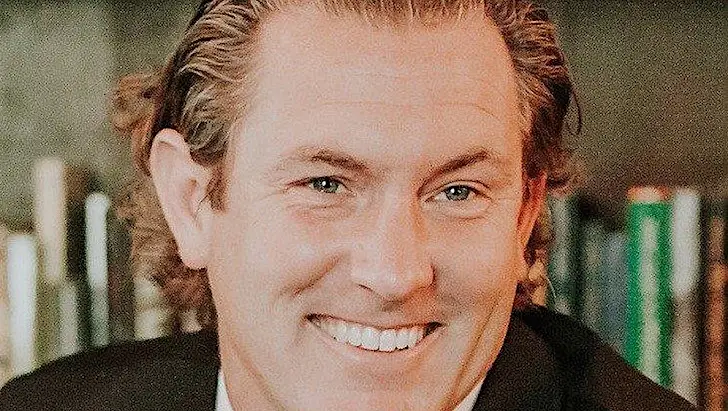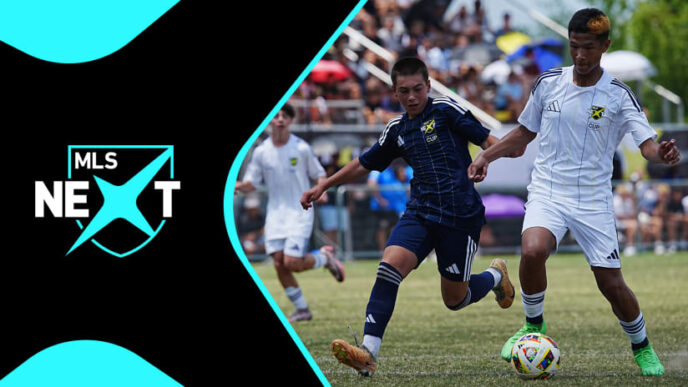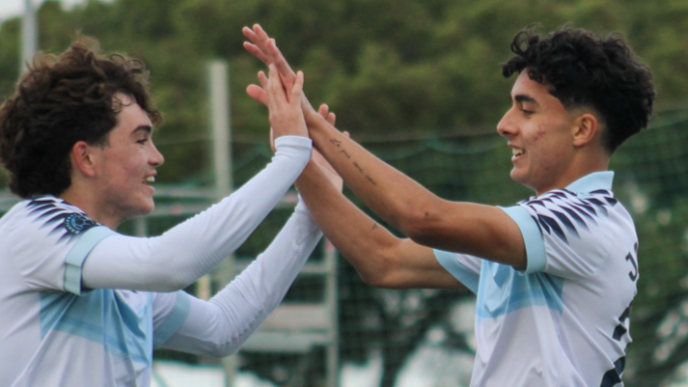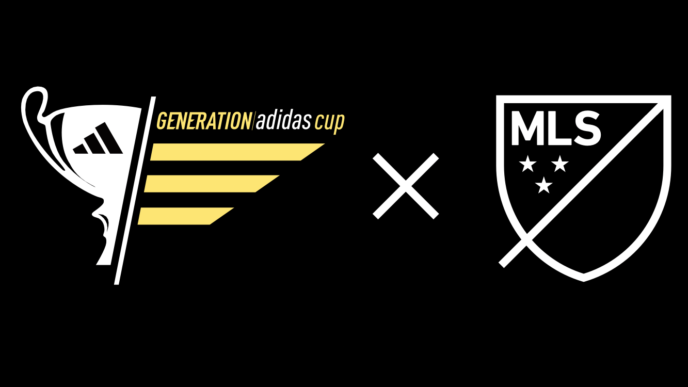Christian Lavers — ECNL’s President — on What is Working and What Needs to Change
What are the problems in American youth soccer? What is working with American youth soccer development? There are many diverse thoughts in how to fix US youth soccer and to explain why US Men’s soccer struggles on a global stage … there are many top youth soccer coaches USA determined to make a difference. The What’s Right & What’s Wrong Series explores these questions.
In January of 2018, the United Soccer Coaches presented to Orange County Surf SC’s Platini Soaf the 2017 Girls Far West Region Youth Coach of the Year.
SoccerToday Interview with Christian Lavers on What is Working and What Needs to Change
Christian Lavers is the President of the Elite Clubs National League (ECNL). The Girls ECNL and the Boys ECNL were founded with the mission to Raise the Game by improving all aspects of the youth player experience. Lavers is also the Director of Coaching for youth club FC Wisconsin and has coached in the NWSL with the Chicago Red Stars for 4 seasons. Lavers has helped lead US Club Soccer’s technical and educational partnership with LaLiga, and has helped build and develop a variety of improved youth platforms across the country in competition, education, and player identification.
SoccerToday’s Diane Scavuzzo asked Christian Lavers for his thoughts on youth soccer in America, specifically on what needs to change to create a brighter, more successful future.

Diane Scavuzzo: What is right and what is wrong in American youth soccer?
Christian Lavers: American youth soccer has never had so many resources, so much opportunity for players, coaches, and clubs, and so many people in the grassroots that want to make the game better.
Within that context, the biggest challenge currently is using all of these resources and opportunities intelligently and efficiently to improve the quality of the youth experience, together, and across the board.
In doing that, while we can and should agree on some general principles that are shared by anyone committed to a better development experience, there has to be respect for the differences in philosophy, structure, and purpose that are represented by programs of diverse organizations, in widely varied regions of the country, and with different cultures.
More simply – there should be no level of soccer in this country that is labeled “bad” or is marginalized, but that is now happening all over the place, for self-serving reasons.
THE DEMAND FOR “ALIGNMENT” AND FOR “ONE PATHWAY” IS AN IMPLICIT STATEMENT THAT CERTAIN PROGRAMS ARE OF LESSER VALUE IN THE GAME.
This implies that there is and should be only one solution for every aspiring player regardless of their background, and is an attempt to categorize the game and its members into imposed boxes. This is tremendously divisive, creates enmity at all levels, and just as importantly, restricts innovation, competition, and creativity – the drivers of change and improvement.
Youth soccer needs collaborative leaders that are stewards of the game and skilled in stimulating discussion and creating compromise and consensus – not individuals with all the answers.

Diane Scavuzzo: What needs to change in youth soccer today?
Christian Lavers: On the field, the game needs to become more cognitively sophisticated, with player decision-making put as the priority in teaching and coaching. For a long time, coaching education has encouraged breaking down the game into too many separate and isolated pieces – so much so that, in some ways, the resulting practices can fail to teach players how to understand the game itself.
For example, “technique” must imply more than ball mastery or execution, and “physical” training needs context.
There needs to be a shift in the education and training paradigm towards understanding the learning process of the players, and understanding the perceptive and cognitive demands of the game.
Within that framework, we can evaluate coaching and development in youth soccer based on an integrated approach of teaching perception, decision-making, and execution.
TEACHING PLAYERS HOW TO MORE EFFECTIVELY GO THROUGH THIS PERCEPTION-DECISION-EXECUTION COGNITIVE LOOP — IS HOW WE CAN HELP DEVELOP MORE INDEPENDENT, THOUGHTFUL, AND CREATIVE PLAYERS.
The Perception-Decision-Execution cognitive loop is the perception of what is happening, a decision based on what is perceived and one that is consistent with the principles of the game, and an attempt to execute that informed decision.
Overall, the primary requirement for improvement in youth soccer is in education, in many forms, which wouldn’t surprise any expert in cultural change. Raising the quality of teaching and development requires better education of coaches, and educating more coaches.
Correcting misplaced priorities in youth sports requires educating coaches and parents about long-term development, and about children and the way they view and understand the world.
Change through education is permanent and deep, but the price is that it is harder and takes longer.
Unfortunately, too many people want to pronounce problems solved by new rules or mandates or restrictions – which not only shows a lack of understanding, it actually just forces the true cause of the problem underground where it continues.

Diane Scavuzzo: Where have we fallen short and how can that be improved?
Christian Lavers: Perspective.
The youth game is the foundation for the future of every part of the game in the country.
In the long term, a better youth experience — in all its forms — will increase the quality of the professional game, the quality of the national teams, the number of fans of the game, the resources invested in the game, and more.
A BETTER YOUTH GAME WILL HELP EVERYONE.
It may get more headlines to talk about other issues, or high profile short-term problems in other areas, but the answer to a better game overall has to begin in youth.
Look at it this way. If we increased youth participation by 1,000,000 players in the United States in the next 5 years – probably most easily done just by reducing drop-out – the quality of every level of the game would improve almost by default.
If 10,000 more coaches were educated in “C”, “B”, and “A” licenses or other equivalent programs in the next 5 years, the quality of every aspect of the game would improve.
A better perspective would also include an attempt to expand the number of entry points into the game, and the number of different pathways for development through the game.
If we are truly interested in improvement and growth, there is no logic or justification for decisions that create fewer or more difficult entry points, or that attempt to limit the number of pathways based on the opinion of a small group.
If we are truly interested in improving and growing the game, the existence of multiple entry points and multiple successful pathways should be seen as a sign of a robust and healthy game that attracts players and coaches from all backgrounds. Instead of choice and variety being fought, they should actually be the goal of youth leadership.

Diane Scavuzzo: What do you recommend?
Christian Lavers: In brief, better leadership and more humility.
I have advocated for collaborative leadership for many years–from the existing youth members, from leaders of clubs and leagues, and from beyond and outside of youth soccer.
THERE IS NO WAY TO SIMPLIFY THE CHALLENGE OF WORKING WITH PEOPLE OF DIVERSE BACKGROUNDS, PERSPECTIVES, AND PHILOSOPHIES IN YOUTH SOCCER.
It is hard, it takes time and it is our reality – but it is not a negative.
In fact, these factors are what have made our country great – the freedom to have different opinions, the diversity of background and perspective, the open challenging, sifting and winnowing of opposing ideas.
These factors spark innovation, and are the key to growth and progress. Instead of creating barriers, pronouncing judgment, issuing mandates, and creating division, we need stewardship and servant leadership from those in positions of influence – from all across the game.
Coaching picture with USA jersey — Photo Credit: Andy Mead














